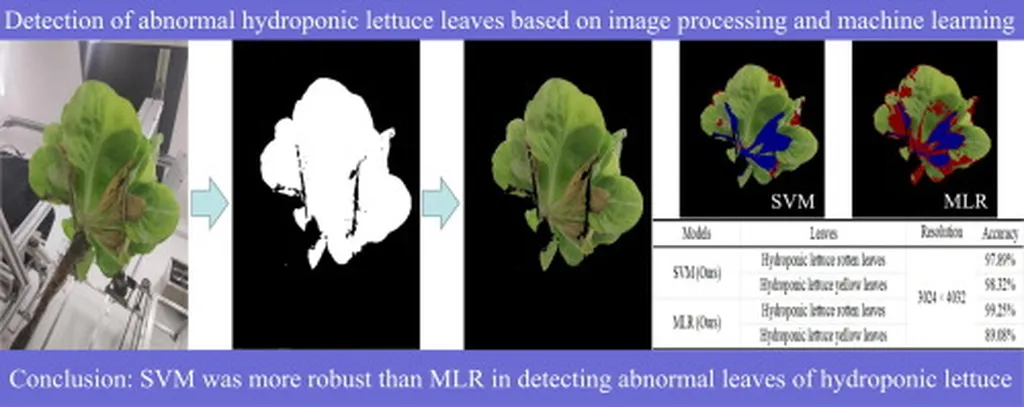In the ever-evolving landscape of precision agriculture, a groundbreaking study has emerged that could revolutionize how farmers monitor and manage lettuce crops. Researchers have developed a sophisticated deep learning model capable of rapidly and accurately identifying diseases in lettuce plants, a critical advancement for sustainable and efficient farming practices.
The study, led by Parul Nasra from Chitkara University Institute of Engineering and Technology in India, introduces Efficient-FBM-FRMNet, a modular deep learning framework designed to automate the detection of bacterial and fungal infections in lettuce. These infections, which can severely reduce yield and quality, have long been a challenge for farmers, often requiring time-consuming and labor-intensive manual inspections.
Efficient-FBM-FRMNet integrates several innovative components to enhance its performance. The model combines EfficientNetB4 with dilated convolutions, a Feature Bottleneck Module (FBM) for redundancy reduction, a Reasoning Engine for higher-order semantic inference, and a Feature Refinement Module (FRM) for improved generalization. This sophisticated architecture allows the model to achieve an impressive overall accuracy of 97.5%, outperforming baseline convolutional neural networks (CNNs) such as EfficientNetB4, ResNet50, and DenseNet121.
“The integration of FBM, Reasoning Engine, and FRM not only enhances discriminative feature learning and interpretability but also ensures stability and reduces computational cost,” Nasra explained. “This makes our model particularly suitable for real-world deployment in various agricultural settings.”
The model’s superior precision (96.0%), recall (96.6%), and F1-score (97.0%) confirm its robustness and consistency across multiple validation folds. Statistical significance analysis further verified that the performance gains were not due to random variation, underscoring the reliability of the model.
One of the most compelling aspects of this research is its potential commercial impact. The model’s efficiency and accuracy can significantly streamline disease detection processes, reducing the need for manual inspections and enabling faster, more informed decision-making. This can lead to substantial cost savings and improved crop yields, benefiting both small-scale farmers and large agricultural enterprises.
“The ability to quickly and accurately identify diseases in lettuce plants can transform how we approach crop management,” said Nasra. “This technology can be integrated into greenhouse monitoring systems, UAV-based surveillance, and mobile diagnostic tools, making precision agriculture more accessible and effective.”
The study, published in the journal ‘Frontiers in Plant Science’, highlights the growing role of artificial intelligence in agriculture. As the sector continues to embrace technological advancements, the integration of deep learning models like Efficient-FBM-FRMNet could pave the way for more sustainable and efficient farming practices.
This research not only showcases the potential of AI in disease detection but also sets a precedent for future developments in the field. As the technology evolves, we can expect to see even more sophisticated models that address a wider range of agricultural challenges, ultimately contributing to a more resilient and productive food system.

